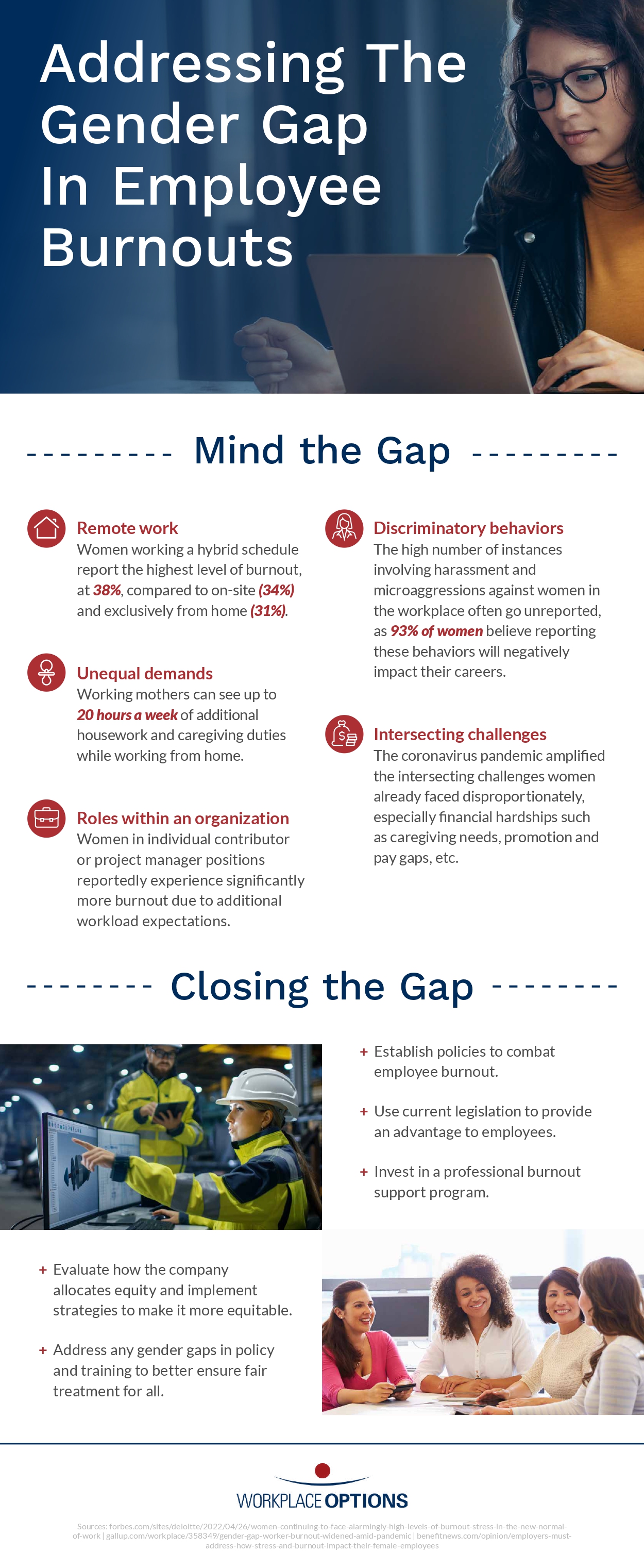The issue of burnout is a persistent concern that affects employees across industries. However, within this broader challenge, the gender gap in experiencing burnout has emerged as a nuanced and critical issue. Companies striving for inclusivity and employee well-being must confront this disparity head-on to foster a workplace culture that supports all employees equally.
Addressing the gender gap in burnout begins with acknowledging the multifaceted factors contributing to this imbalance. Societal expectations, traditional gender roles, and workplace structures often place distinct pressures on individuals based on their gender. Women may find themselves navigating a delicate balance between professional responsibilities and societal expectations related to caregiving and household duties. Recognizing and dismantling these ingrained biases is a crucial first step for companies committed to gender equality.
Flexible work arrangements play a pivotal role in bridging the gender gap in burnout. Offering flexible schedules, remote work options, and parental leave policies that are equally accessible to all employees fosters an environment where individuals can balance their professional and personal responsibilities more effectively. This not only addresses the specific challenges women may face but also promotes a culture that values work-life balance for everyone.
Leadership plays a crucial role in shaping workplace culture, and addressing the gender gap in burnout requires intentional efforts from the top down. Company leaders must actively promote a culture of inclusivity and equality, challenging gender stereotypes and biases within the organization. Creating mentorship programs and leadership development opportunities that prioritize diversity and inclusion ensures that women have the support and guidance needed to navigate their careers successfully.
Effective communication is another key element in addressing burnout and the gender gap. Companies should establish open channels for employees to express their concerns, share their experiences, and seek support. Fostering an environment where employees feel comfortable discussing their well-being without fear of judgment or repercussions is essential. This includes promoting mental health awareness and providing resources for employees to seek professional help when needed.
Inclusivity in decision-making processes is vital for closing the gender gap in burnout. Companies should ensure that women are well-represented in leadership roles and decision-making bodies. This not only brings diverse perspectives to the table but also sends a powerful message about the organization’s commitment to gender equality. Empowering women to actively participate in shaping company policies and initiatives contributes to a more equitable workplace.
Training programs focused on resilience and stress management can benefit all employees but may be particularly impactful in addressing the gender gap in burnout. By providing resources and education on coping strategies, companies empower employees to navigate the challenges of their roles effectively. This proactive approach helps create a workplace culture that prioritizes mental well-being for everyone.
In conclusion, addressing the gender gap in burnout requires a comprehensive and intentional effort from companies. It involves dismantling ingrained biases, promoting flexible work arrangements, fostering inclusive leadership, facilitating open communication, and providing resources for resilience. By committing to these initiatives, organizations can create a workplace culture where burnout is addressed equitably, ensuring that all employees, regardless of gender, can thrive both personally and professionally. To learn more, check out the graphic below.
Infographic provided by Workplace Options, experts on corporate wellness solutions



